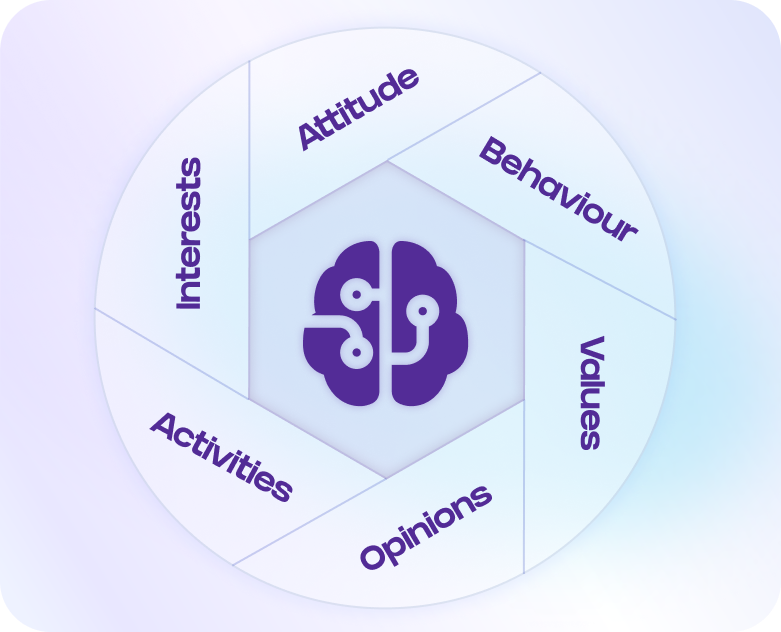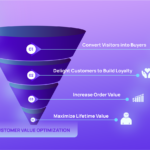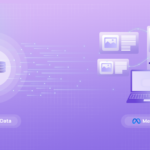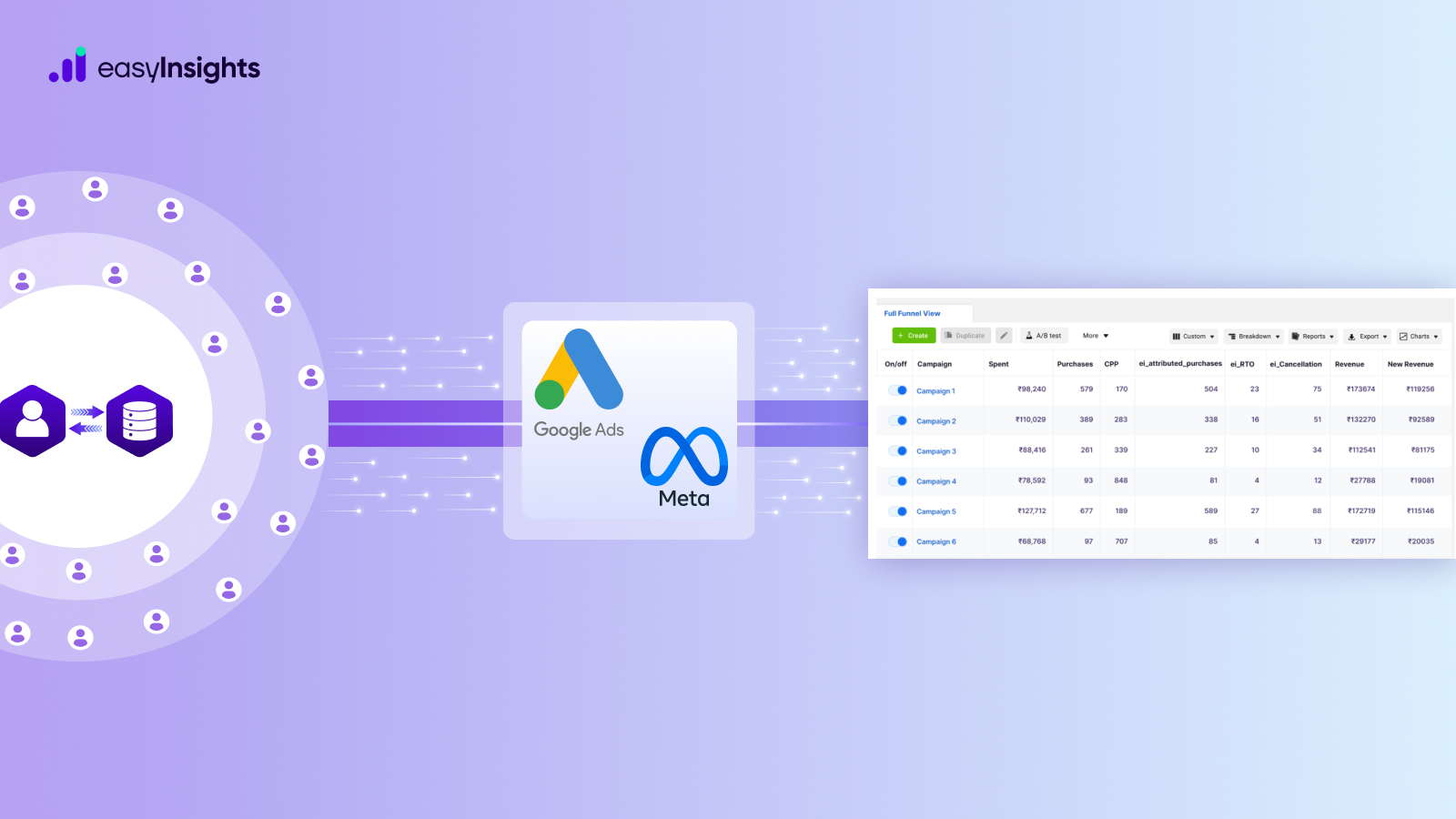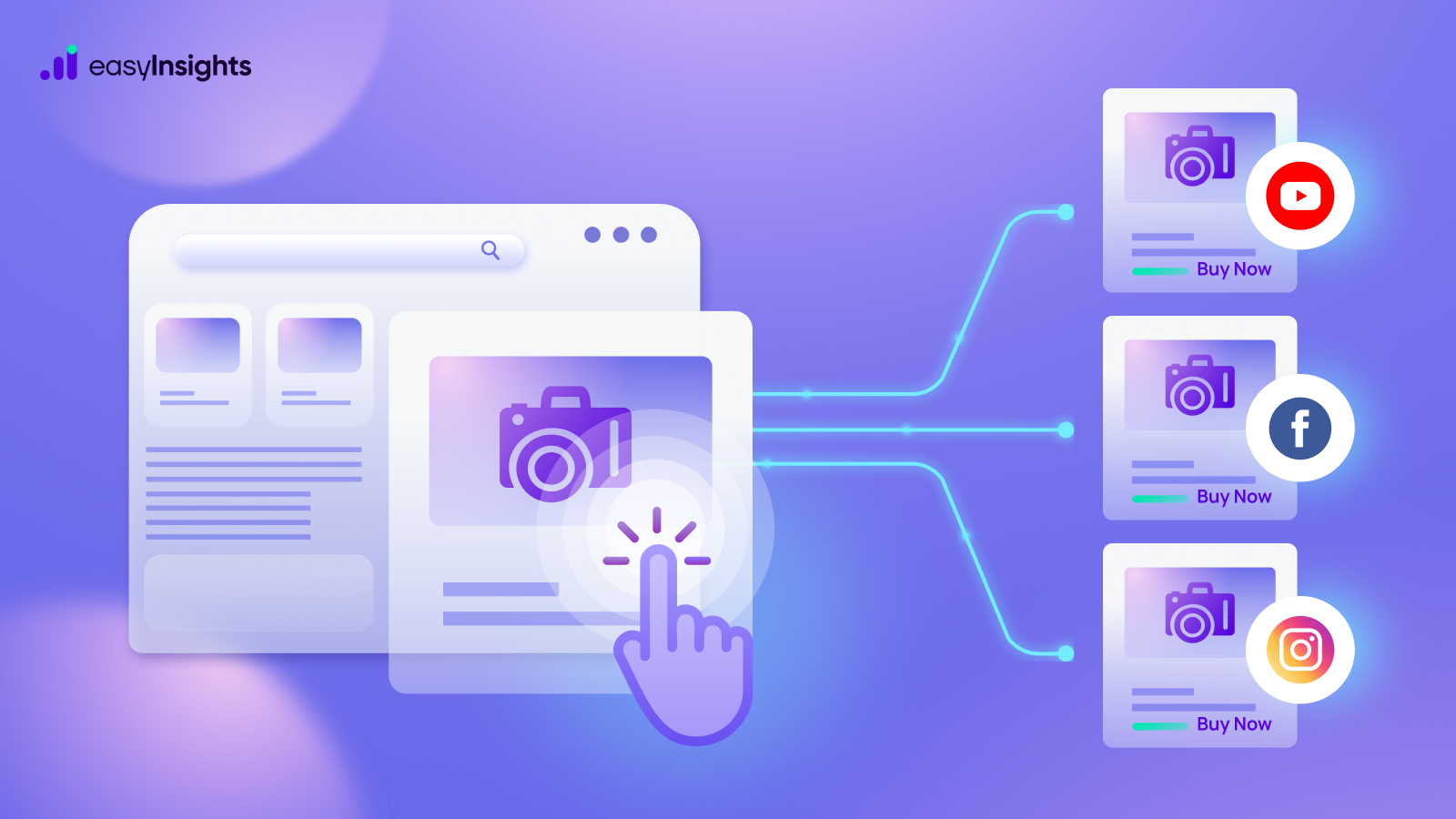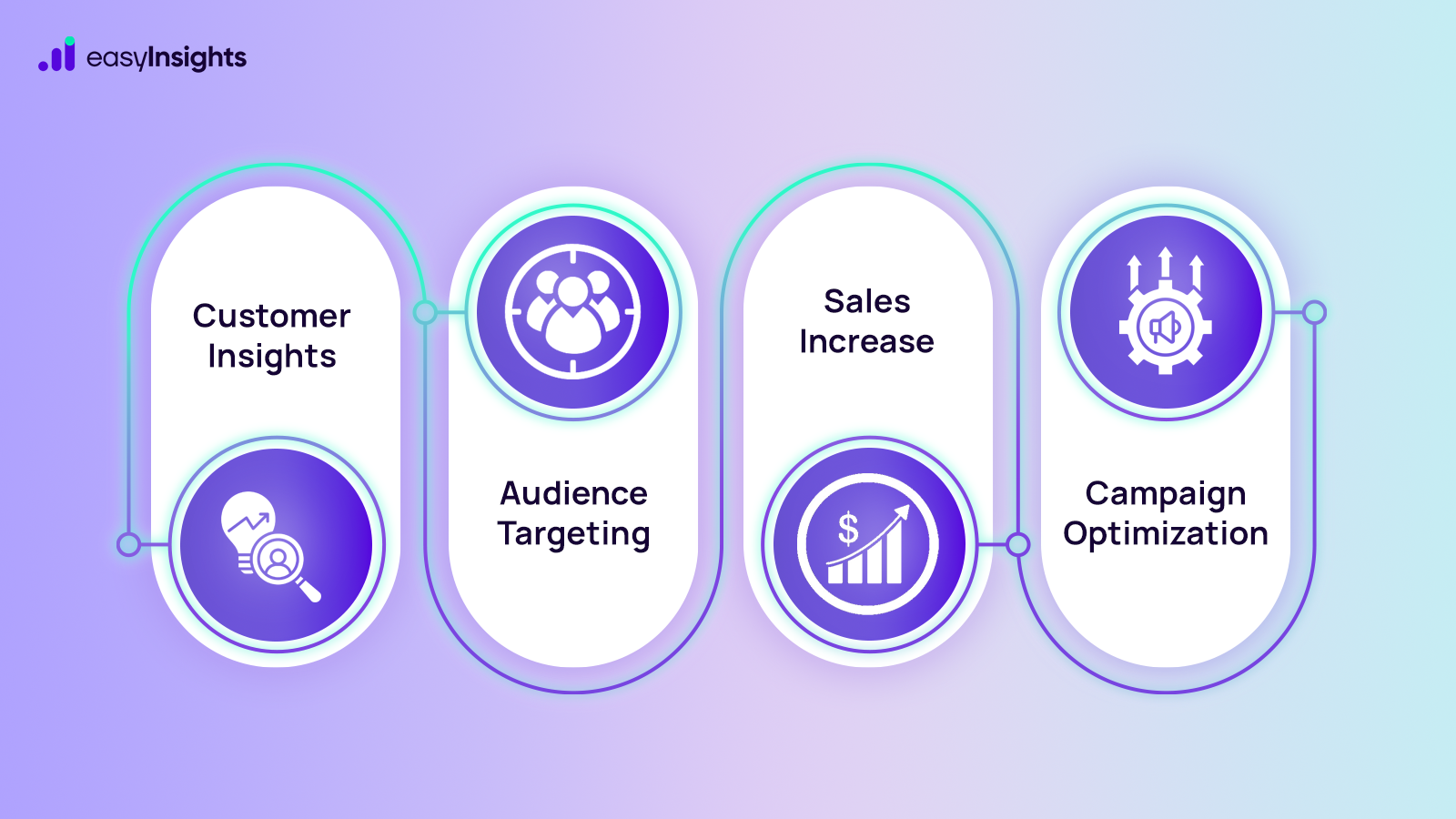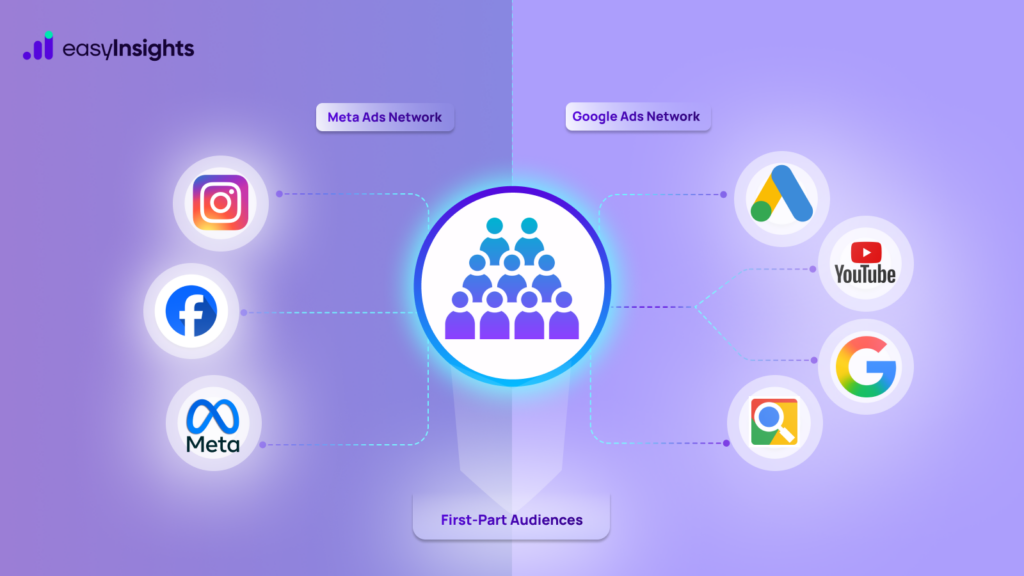
In a world where third-party cookies are disappearing and privacy regulations are tightening, digital advertisers are facing a critical challenge: the loss of reliable audience data. With limitations on cross-site tracking and increased data restrictions across browsers and platforms, collecting accurate, consented user signals has become harder than ever.
That’s why the focus is shifting to what businesses already own their first-party data. First-party audiences are built using data collected directly from your customers, such as website visits, in-app behavior, CRM records, and email interactions. When activated properly on platforms like Meta (Facebook & Instagram) and Google Ads, these audiences allow you to target with precision, personalise messaging at scale, and drive better performance – all while staying compliant with evolving privacy standards.
In this blog, we’ll break down how to use first-party audiences effectively across Meta and Google, and how to unlock their full potential to boost campaign impact and customer engagement.
Jump ahead to:
What are First-Party Audiences
First-party audiences are audience segments built using data collected directly from your business’s owned touchpoints – such as your website, mobile app, CRM, or offline interactions like in-store purchases or call center engagements.
This data originates from real user behavior: page visits, clicks, form submissions, purchases, and more. Unlike third-party data that is aggregated from external sources, first-party data is generated from how users engage with your brand – making it more accurate, compliant, and relevant to your actual customers.
These audiences allow marketers to activate powerful use cases across advertising platforms. Whether it’s retargeting high-intent visitors, excluding existing customers from acquisition campaigns, or creating high-performing lookalike segments, first-party audiences enable more personalised, efficient, and privacy-resilient marketing.
In an ecosystem moving away from cookies and toward consented, signal-rich data, first-party audiences are quickly becoming a cornerstone of digital advertising strategy.
How is Audience Segmentation Done
First-party audiences are segmented based on real user signals—making your targeting sharper and more relevant. You can create audience groups using:
- Attributes like demographics, location, or job title
- Behaviors such as product views, cart activity, or app usage
- Interests based on browsing patterns or content engagement
- Preferences or opinions collected from surveys or form inputs
The goal is to build precise segments that align with your customer journey from awareness to retention, so every ad feels timely, relevant, and personal.
Meta offers a wide range of tools to help advertisers tap into their own first-party data. By building custom audiences based on your CRM, website activity, app engagement, or social interactions, you can reach people who are already familiar with your brand — or find new users who behave similarly.
Strategies to use First-Party Audiences
Here’s how to use first-party audiences effectively across Facebook and Instagram:
1. Upload Customer Lists
If you have a database of emails, phone numbers, or other customer identifiers, you can upload it directly to Meta.
- Meta: Go to Meta Ads Manager > Audiences > Create Audience > Custom Audience > Customer List
- Google: Go to Tools & Settings → Audience Manager → Segments → Customer List
Upload a CSV file with user data or sync through data activation platforms CRMs, or Customer Match APIs.
For best results, always segment your lists based on user behavior or lifecycle stage — such as high LTV customers, recent buyers, inactive users, or cart abandoners. This ensures your messaging stays relevant, performance improves, and budget is used efficiently.
2. Website Custom Audiences
Once your tracking infrastructure is in place, both Meta and Google allow you to build dynamic, behavior-based audiences using website activity. This enables you to retarget visitors with relevant, timely messaging based on their actions.
Meta: Implement the Meta Pixel (client-side) or Conversions API (CAPI) (server-side) on your website to capture user actions. These events are used to create Website Custom Audiences within Meta Ads Manager.
Google Ads: Use the Google Ads tag or Google Tag Manager to set up website event tracking. Alternatively, use Google Analytics 4 (GA4) audiences linked to your Google Ads account to build retargeting lists.
Both platforms track user behavior and store it in your audience library, letting you define rules based on specific actions or visits. Data is privacy-compliant, anonymized, and time-bound (e.g. 30, 60, or 180 days lookback).
Audience Criteria You Can Build: All website visitors, Viewed specific product or category pages, Added items to cart, Initiated or completed checkout, Spent significant time on site (e.g. top 25% by time on page), Visited high-intent URLs (e.g. pricing, contact, demo form)
Pro Tip for Marketers: Use URL-based rules and custom events to build intent-driven segments. For example:
- Users who visited /pricing but didn’t sign up
- Those who viewed more than 3 product pages in one session
- Repeat visitors within 7 days
- Upsell Offers: Target recent buyers with complementary products
Pair these with creative that matches their journey stage for higher relevance and performance.
3. App Activity
If your mobile app is properly integrated with Meta and Google, you can track in-app behavior and build audiences based on user actions. This enables personalized retargeting across the user lifecycle from install to repeat purchases.
Meta: Integrate your app using the Meta SDK or App Events via CAPI for Apps. Once set up, Meta tracks in-app events and allows you to build App Activity Custom Audiences in Ads Manager.
Google: Link your app with Google Analytics for Firebase and connect Firebase to your Google Ads account. This allows you to use App User Audiences within Google Ads, based on Firebase event triggers.
You can define audiences using pre-set or custom in-app events and apply time windows (e.g. users active in the last 7 or 30 days).
Audience Criteria You Can Build: First-time app installs, Users who completed onboarding or sign-up, Users who made an in-app purchase or renewed a subscription, Dormant users who haven’t opened the app recently, Users who triggered key events (e.g. added to wish list, completed a level)
Pro Tip: Always define high-intent events early in your app development (e.g. completed registration, trial activated). These events become powerful signals for building value-based segments later.
For best results, sync your app data automatically using Firebase and Meta SDK, and refresh audience lists regularly to align with real-time user behavior.
Also Read: App Marketing Strategies to Charge up User Acquisition and Retention
4. Lookalike & Similar Audiences
Both Meta and Google allow you to create algorithmically generated audiences that resemble your best customers.
Meta: Create a Lookalike Audience by selecting a high-quality source audience such as recent purchasers, high-LTV customers, or top converters. Meta uses machine learning to identify users with similar demographics, behaviours, and online patterns.
You can adjust the lookalike size from 1% (most similar) to 10% (broader reach, lower match accuracy), depending on your campaign goals.
Google Ads: While Similar Audiences have been deprecated for most placements, Google now leverages your first-party data through Optimized Targeting and Audience Expansion.
When you use a customer list or custom segment, Google automatically finds new users with similar intent signals especially on Performance Max, Discovery, and YouTube campaigns.
Pro Tip: Don’t treat lookalikes as standalone silver bullets. Pair them with strong creative, contextual messaging, and a conversion-optimized landing page to convert top-of-funnel users more efficiently.
5. Bonus: Shared Audiences & Brand-Level Targeting at Scale
For large brands, franchises, or teams managing multiple ad accounts, both Meta and Google offer advanced capabilities to centralize audience data, collaborate across business units, and scale performance using unified signals.
a) Audience Sharing Across Accounts
Google: Using a Google Ads Manager Account (MCC), you can share Customer Match lists, GA4 audiences, and remarketing segments across multiple child accounts. This is especially valuable for large businesses operating separate accounts by region, product line, or agency partner.
Meta: Meta allows audience sharing via Business Manager. If multiple ad accounts are connected to the same Business Manager, you can share Custom Audiences (e.g. customer lists or website/app audiences) across them. Agencies managing client accounts can also request access or share audiences between Business Managers via partnerships.
b) Optimized Targeting with First-Party Signals
Google: Even though Similar Audiences are being sunset, Google continues to expand your reach intelligently using Optimized Targeting. When you use Customer Match lists or GA4 signals, Google automatically identifies new users who share behavioral traits and intent signals – driven by real-time context, not static lookalike models.
Meta: Meta’s Advantage Lookalike and Advantage+ Shopping Campaigns similarly use machine learning to optimise delivery. When paired with high-quality first-party audiences (e.g. top converters), Meta expands reach while maintaining conversion potential — without manually creating multiple lookalike layers.
c) Brand & Retail Media Collaborations
Google: For enterprise-level advertisers (e.g. CPG, retail, automotive), Google enables advanced audience enrichment through Retail Media Network integrations and Ads Data Hub. These collaborations allow brands to combine retailer data with Google’s ecosystem to create co-branded audiences — unlocking targeting precision at scale.
Meta: Meta supports similar brand collaborations via Partner Integrations and Meta Business Partners, particularly for retail, eCommerce, and app-based businesses. For example, a D2C brand can partner with a retailer or distributor to co-target overlapping customers or activate shared product-level insights.
Pro Tip for Enterprise Marketers: Unifying audience strategy across business units isn’t just operationally efficient – it also enables better cross-channel learning, improves audience saturation control, and ensures data privacy compliance when sharing lists via secure platform-level permissions.
Invest in consistent naming conventions, audience lifecycle frameworks, and governance policies if you’re managing high-volume or multi-account setups.
Best Practices for Both Platforms
- Refresh Your Audiences Regularly: Keep uploading or syncing fresh data (weekly or daily if possible)
- Get Consent: Always collect user data with proper consent for marketing use
- Use Audience Exclusions: Exclude converters to save ad spend and reduce fatigue
- Combine with Platform Signals: Layer first-party audiences with intent or interest-based targeting for even better results
Final Tip: Use Server-Side Tracking with EasyInsights
Pixel-based (client-side) tracking is no longer enough. With growing privacy restrictions, iOS changes, and cookie deprecation, it often misses key events, leading to poor attribution, weak audience matching, and inefficient ad spend.
Server-side tracking solves this by sending events directly from your server to platforms like Meta and Google, ensuring reliable, consented, and high-quality signals.
This is where EasyInsights.ai makes a difference:
- Our lightweight pixel collects first-party user data from your website accurately and privacy-compliantly.
- Events are sent via server-side APIs (Meta CAPI, Google Enhanced Conversions) to improve attribution and event match quality.
- We integrate your CRM and offline events (like deals won or store visits) to enable full-funnel measurement.
- Sync enriched segments with Customer Engagement Platforms (CEPs) for real-time personalization across channels like email, SMS, and push.
With EasyInsights, your first-party data isn’t just tracked — it’s activated across your marketing stack for better targeting, better attribution, and better ROI.
Also Read: How to improve event match quality with the first party data
Conclusion
Your customer data is one of your most valuable assets. When used right, first-party audiences don’t just improve campaign performance they future-proof your marketing strategy. Start small, keep your data clean, and continuously test what audience segments work best.
As the digital landscape shifts away from third-party tracking, first-party audiences have become the foundation of successful advertising on platforms like Meta and Google. They allow you to target with precision, personalize experiences, and stay compliant in a privacy-first world.
But to truly unlock their value, it’s not just about collecting data, it’s about activating it intelligently. With tools like EasyInsights.ai, you can unify data from your website, CRM, and offline sources, build high-quality audience segments, and deliver them to ad platforms in real time for better performance and attribution.
Start with your owned data, invest in smart segmentation, and future-proof your campaigns with reliable infrastructure. The more accurately you reach your audience, the more efficiently your ad dollars work.


